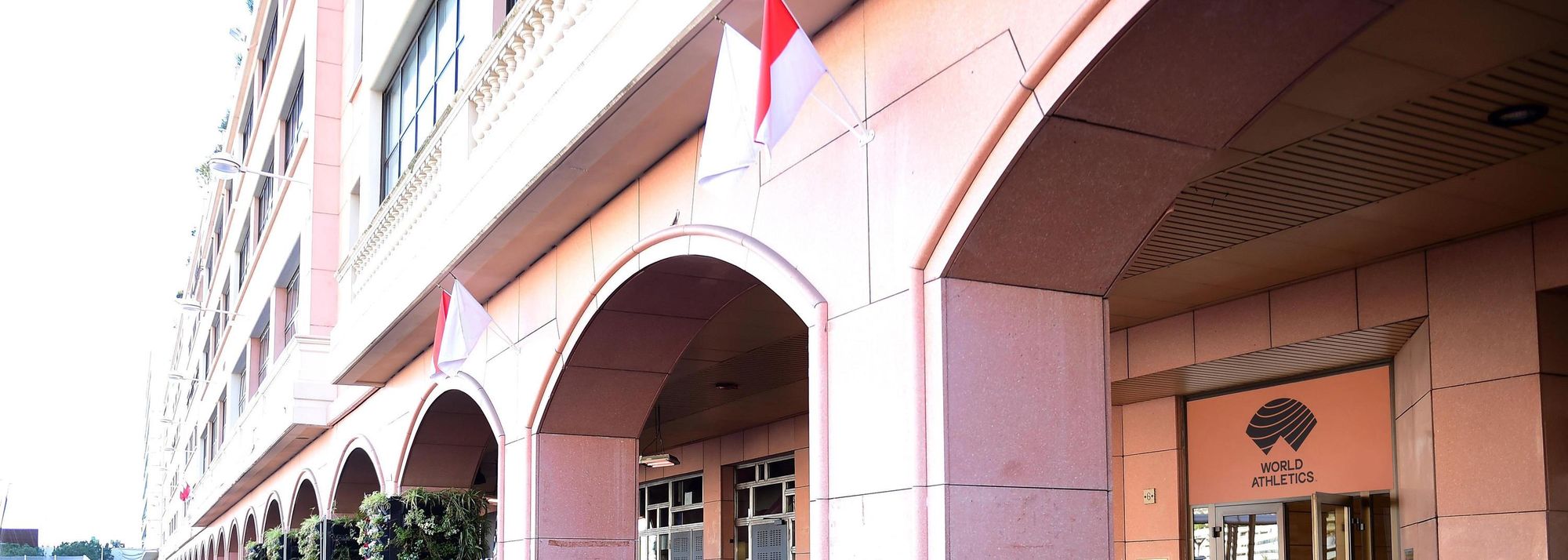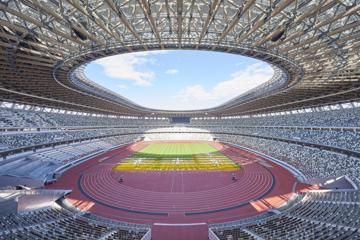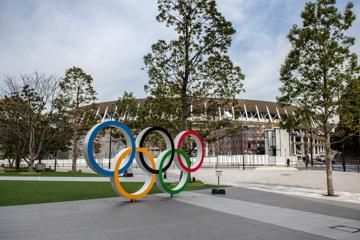World Athletics headquarters in Monaco (© Getty Images)
With the reopening of its headquarters this week, World Athletics has taken the opportunity to discuss with its 214 Member Federations its new Strategic Plan to drive growth, the latest medical advice on the coronavirus pandemic, particularly as it impacts on athletes returning to training and competition, and the updated Olympic qualifying process for Tokyo next year.
In three online meetings that spanned the globe today, World Athletics and its Member Federations discussed the direction athletics will take over the next four years and the short-term challenges and opportunities the sport has as the world begins to emerge from lockdown.
World Athletics president Sebastian Coe, who chaired the meetings, said it was important to communicate regularly with the Member Federations in this unprecedented situation and to give direction for the future.
"Our head office may have been closed for 11 weeks but we have not been idle," Coe said.
“We have used that time to continue to develop our strategy to grow athletics. A huge amount of work has been put into developing our four-year Strategic Plan, led by our CEO Jon Ridgeon and with input and involvement from all at HQ, our Executive Board, our Area Presidents, Commission Chairs and Commissions. This is an exceptional body of work that brings together all the great things we do as a global sport body with a laser sharp focus on doing it better, and includes some innovative and creative ideas to drive growth in our sport. It is exactly the type of roadmap our sport needs to bring together all our stakeholders with a single vision, mission and clear priorities.
"Over the next few months we have an unprecedented opportunity on the back of the increased physical activity of people in lockdown. The latest research from runrepeat.com shows that exercise has increased 88% during lockdown and running and walking has topped the tables. We need to inspire these people to continue the habits they have learned and we will with our own campaigns but also by embracing campaigns that many others in our sport are driving."
Both Coe and Ridgeon will be working from the headquarters in Monaco from next week.
Strategic Plan
The key elements of the strategic plan are:
Vision
To use the power and accessibility of athletics and our athletes to create a healthier and fitter world.
Mission
- Grow the sport and make it relevant in people’s lives and the lives of their communities.
- Inspire by creating globally appealing and accessible competitions, events, and activities so our talented athletes can entertain and inspire the world.
- Lead by being the best example of a well-governed sports federation taking brave leadership decisions and valuing partnerships that deliver athletics around the world.
We will grow athletics, by doing the things we do already even better through an on-going programme of continuous improvement and by delivering new and exciting initiatives and programmes with a focus on four priority goals.
Participation and events
Deliver more events at every level of the sport. From more world-class athletics competitions in all continents at national, regional and international level, through to ensuring there are opportunities for children to try our sport wherever they live and campaigns for more people to get active through running.
People
We will celebrate, support and develop the people (coaches, officials, volunteers and professionals) who deliver our sport throughout the world, at every level, providing clear access and pathways and we will double the number of new recruits who support the delivery our sport – as coaches and officials or in Member Federation, event or club roles.
Fans
We want our fans to attend and watch our athletes compete, as well as get to know and engage with them through new platforms and initiatives. By 2024 our aim is to grow our broadcast reach, double our digital following and create a database of 1 million known fans who actively choose to connect and engage with us and our sport.
We have continued to engage with our community through the innovative Athletics@Home and the Ultimate Garden Clash projects and we will soon launch a campaign to encourage and assist those who have discovered our sport through running during lockdown to continue to stay fit and healthy as the world emerges from the pandemic.
Partnerships
As the world’s most accessible sport, we rely on strong partnerships to deliver events and programmes at all levels. We value these partnerships and aim to double our current number of meaningful commercial and non-commercial partnerships to generate new financial and activation opportunities for our sport, our athletes, our Member Federations and our communities around the world.
The full strategic plan will be available by the end of June. World Athletics will continue to host regular online meetings with our Member Federations and stakeholders to keep everyone informed and discuss issues of mutual interest as we navigate our way through these challenging times.
Olympic qualification system
Further to the postponement of the Tokyo 2020 Olympic Games, the qualification system in force has been adapted accordingly.
Download the updated Olympic qualifying system: English | French
Key elements
- Qualification principles remain unchanged: qualification through entry standards (which also remain unchanged) and then world rankings
- Athletes who have already met the entry standard since the start of the qualification period in 2019 remain qualified with other athletes to qualify within the extended qualification period
- Suspended qualification period (for all events) 6 April to 30 November 2020
Amendments to the qualification system listed below
Age requirements have been adapted to reflect new date:
- Senior athletes born in 2001 or earlier
- Junior (U20) athletes born in 2002 or 2003
- Youth (U18) athletes born in 2004 and 2005
- Athletes younger than 16 born in 2006 or later
New entry standards qualification period and world rankings period:
|
Events |
Entry standards period |
World rankings period |
|
Marathon, |
1 Jan 2019 – 5 April 2020 21 months |
1 December 2018 – 5 April 2020 22 months |
|
10,000m, |
1 Jan 2019 – 5 April 2020 22 months |
1 Jan 2019 – 5 April 2020 22 months |
|
All other events |
1 May 2019 – 5 April 2020 18 months |
30 June 2019 – 5 April 2020 16 months |
Marathon automatic qualifiers:
- The top 10 finishers in the men’s marathon and in the women’s marathon at the IAAF World Athletics Championships Doha 2019
- The top 5 finishers at the World Athletics Gold Label marathons and the top 10 finishers at the Marathon Major Series (Tokyo, Boston, London, Berlin, Chicago and New York) held during the qualification period from 1 January 2019 to 5 April 2020
- The top 10 finishers at the Platinum Label marathons and the winners of the Gold Label marathons held during the period from 1 December 2020 to 31 May 2021.
Relay teams automatic qualifiers:
- The top 8 placed NOCs at the World Athletics Relays Silesia 2021, if not already qualified from Doha 2019, shall automatically qualify for the relay events at the 2020 Olympic Games.






